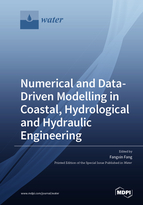Numerical and Data-Driven Modelling in Coastal, Hydrological and Hydraulic Engineering
A special issue of Water (ISSN 2073-4441). This special issue belongs to the section "Oceans and Coastal Zones".
Deadline for manuscript submissions: closed (31 October 2020) | Viewed by 14617
Special Issue Editor
Special Issue Information
Dear Colleagues,
The rational management of a city and its infrastructure in response to increased pollution, climate change, natural and other disasters, for daily operation and emergency response, is becoming critical to enhance livability for citizens. Creating healthy, sustainable urban environments necessitates advanced numerical tools for optimal design and management processes.
As is well known, numerical models are often hindered by difficulties fully capturing the relevant physics, particularly at sub-grid scales; difficulties in capturing the variability of physical properties at the scale of the grid; and uncertainty in the measurements used to calibrate and initialize the models. These manifest as unacceptably long computational times and uncertainty in predictions.
This special issue aims at exploring advanced numerical techniques for real-time prediction and optimal management in coastal and hydraulic engineering, for example (but not limited to):
- uncertainty quantification: modelling key inputs as probability distributions rather than single values, to predict the range of possible physical responses;
- sensitivity analysis: identifying the model inputs upon which a particular prediction is most dependent;
- adaptive meshes: an effective way to encompass different scales (e.g., local, urban, regional, in a unified modelling system to better capture the details of local flows and the interactions among the relevant processes at each scale;
- error quantification: quantifying the impact of discretization errors on prediction quality;
- data assimilation: incorporating information from experiments and observations to reduce uncertainties in predictions;
- adaptive observations: identifying where best to acquire data to improve a particular prediction;
- data-driven modelling based on machine learning: building up the relationship between inputs and outputs from data patterns;
- reduced order modelling: developing approximate models that can run in seconds, for immediate useful predictions for rapid response in emergency situations (e.g., flooding, pollutant emissions and toxic releases in cities).
Dr. Fangxin Fang
Guest Editor
Manuscript Submission Information
Manuscripts should be submitted online at www.mdpi.com by registering and logging in to this website. Once you are registered, click here to go to the submission form. Manuscripts can be submitted until the deadline. All submissions that pass pre-check are peer-reviewed. Accepted papers will be published continuously in the journal (as soon as accepted) and will be listed together on the special issue website. Research articles, review articles as well as short communications are invited. For planned papers, a title and short abstract (about 100 words) can be sent to the Editorial Office for announcement on this website.
Submitted manuscripts should not have been published previously, nor be under consideration for publication elsewhere (except conference proceedings papers). All manuscripts are thoroughly refereed through a single-blind peer-review process. A guide for authors and other relevant information for submission of manuscripts is available on the Instructions for Authors page. Water is an international peer-reviewed open access semimonthly journal published by MDPI.
Please visit the Instructions for Authors page before submitting a manuscript. The Article Processing Charge (APC) for publication in this open access journal is 2600 CHF (Swiss Francs). Submitted papers should be well formatted and use good English. Authors may use MDPI's English editing service prior to publication or during author revisions.
Keywords
- numerical modelling
- machine learning
- data assimilation
- uncertainty
- adaptive meshes
- model reduction






